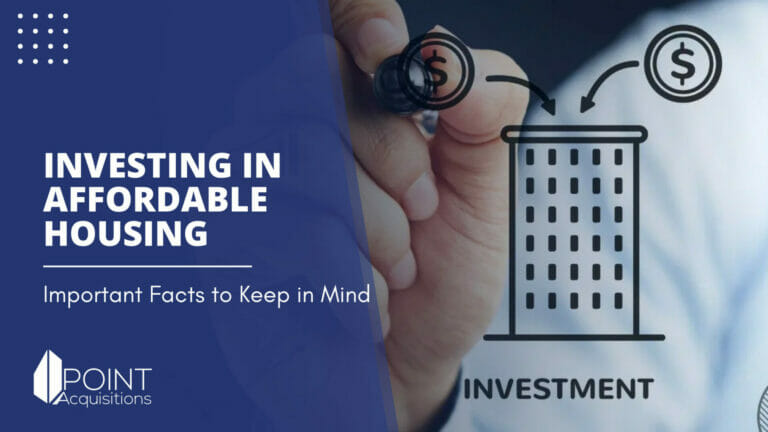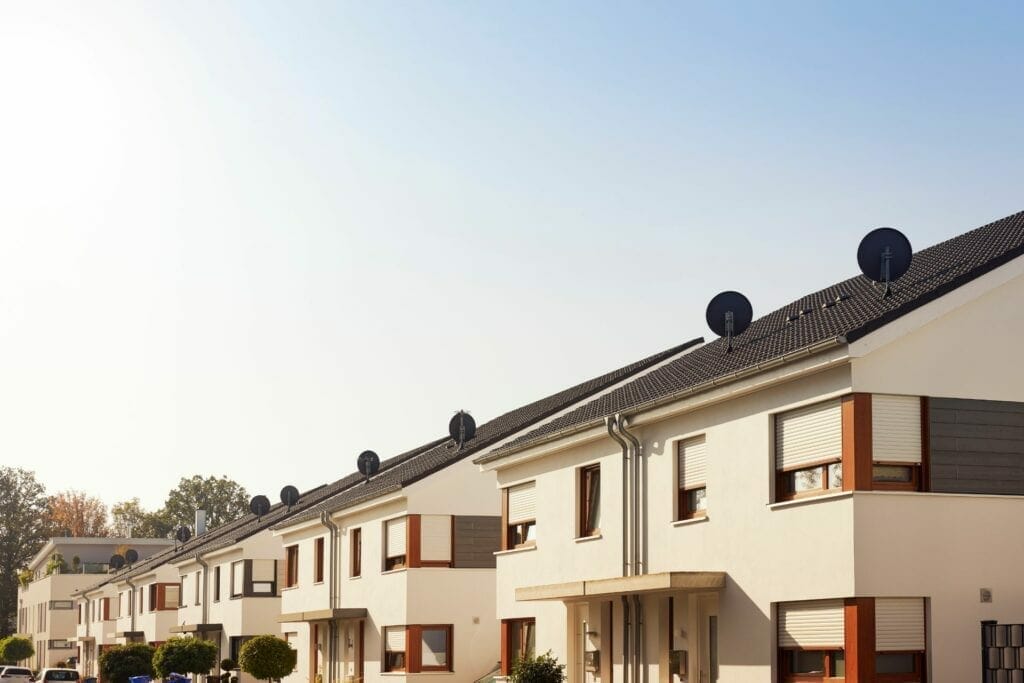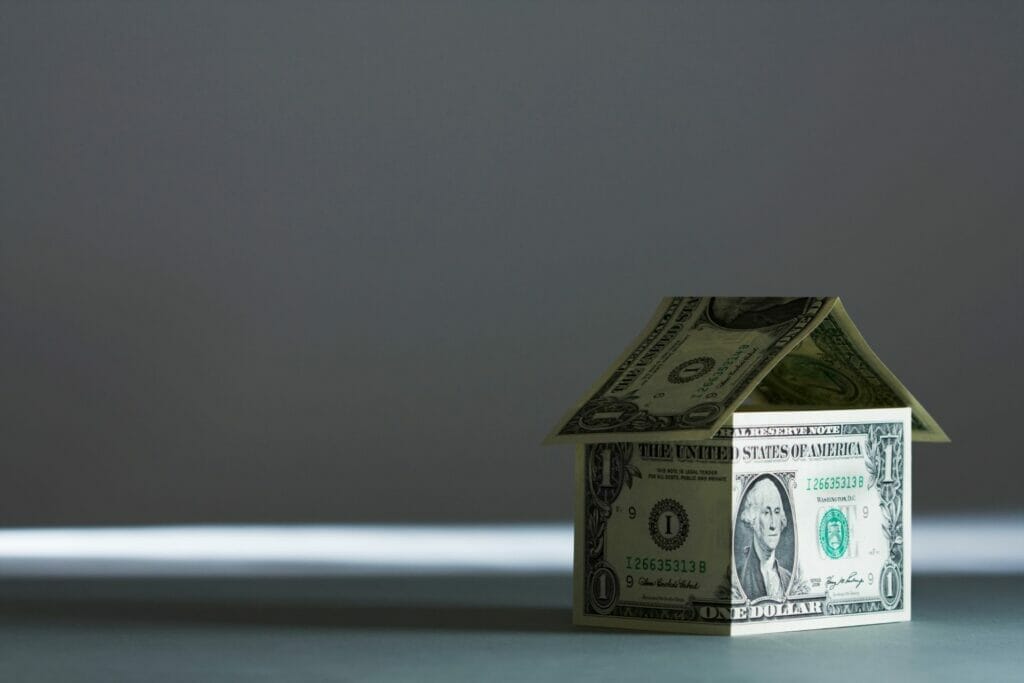
Affordable Housing Investing: What You Need to Know
Investing in affordable housing can be a great way to generate passive income. However, there are a few things you need to know before getting started. In this blog post, we will discuss the basics of affordable housing investing and provide you with some tips to get started. So, if you’re interested in learning more about this topic, keep reading!

Table of Contents
What is Affordable Housing?
Affordable housing is defined as housing that costs no more than 30% of a household’s monthly income. This includes rent and utilities. For example, if your monthly income is $3000, your total housing costs should not exceed $900. Affordable housing is important because it allows people to live in safe, decent homes without spending all their income on housing.
Affordable Housing in Florida
Unfortunately, the situation with affordable housing in Florida is not good. According to a recent report, nearly half of all renters in Florida are considered “cost-burdened,” meaning they spend more than 30% of their income on housing. This is one of the highest rates in the country. The lack of affordable housing is a major issue in Florida, and it’s only getting worse.
It is projected that the shortage of affordable housing in Florida will reach nearly 700,000 units by 2025. This is a huge problem, and it needs to be addressed.
One way to help address the affordable housing crisis in Florida is to invest in affordable housing. Investing in low income housing can provide people with a safe, decent place to live while also generating passive income.
What is Affordable Housing Investing?
Affordable housing investment is the process of investing in properties that are used for affordable housing. These properties can be anything from apartments to single-family homes. Investors typically generate income from these properties by renting them out to tenants.
Low income housing investments offer a few different ways to make money. So how do affordable housing developers make money?

How To Make Money From Affordable Housing Investment?
Affordable housing investments offer a few different ways to make money:
- The most common way is to generate income through rental income. This is done by renting the property to tenants and collecting monthly rent payments.
- Another way to make money from these types of investments is to sell the property for a profit. You can do this either through a traditional sale or by refinancing the property and taking out cash.
Three Benefits of Affordable Housing Investing
A few different benefits come with investing in affordable housing:
- One of the most significant advantages is that it can produce passive income and keep making money without contributing a large amount of effort.
- Another benefit is that these investments tend to be more stable than others. This is because people will always need somewhere to live.
- Lastly, investing in affordable housing can help create or preserve your community’s affordable housing options. This could help keep the community safe and diverse.
Tax Benefits of Affordable Housing Investing
There are three tax benefits associated with affordable housing investing:
- One benefit is the ability to deduct expenses related to the property, such as mortgage interest, repairs, and maintenance.
- Another benefit is the possibility of deferring or eliminating capital gains taxes when you sell the property.
- Finally, you may also be eligible for tax credits, which can further reduce your tax liability.
The 1031 exchange 200% rule is an interesting way to defer capital gains tax and acquire more assets. Consult with a tax professional to learn more about the specific benefits you may be eligible for.
The Risks of Affordable Housing Investing
Like with any investment, there are always some risks involved. However, you can minimize the risks if you research and invest in a good-quality property.
- Vacancy risk is one of the biggest risks associated with affordable housing. This is the risk that a property will not have any tenants and sit vacant for an extended period.
- Another risk to consider is the possibility of default or foreclosure. This happens when tenants stop paying rent and force the investor to evict them from the property.
Should You Invest in Low-Income Areas?
Before you invest in low-income areas, there are a few things to think about. One thing to remember is that the houses in these areas will almost certainly be less expensive, but they will likely have higher vacancy rates. This means there is a greater risk of the property being vacant for an extended period.
Another thing to consider is the crime rate in these areas. Properties located in high-crime areas may be more difficult to rent out and may require additional security measures.
That’s why it’s important to do your research and ask for professional advice before investing in low-income areas.

What is the Lowest Amount of Initial Equity you should invest in an Affordable Housing Property?
As a general rule, you should invest at least 10% of the purchase price in any given property. So, if you’re looking at a $100,000 property, you should have at least $10,000 to invest. This will help ensure that you have enough equity in the property to make a profit if and when you decide to sell.
Of course, this is just a general guideline. You may need to adjust your investment amount based on your specific goals and circumstances. However, you should always consult with a professional before making any investments.
Consider your financial goals
Before investing in any property, it’s important to consider your financial goals. Are you looking to generate income or build wealth? What is your risk tolerance? By understanding your goals, you’ll be able to make better investment decisions.
Work with a professional
When it comes to affordable housing investing, it’s always a good idea to work with a professional. They can help you find properties that fit your investment criteria and provide valuable guidance throughout the process.
The 5 Percent Rule in Affordable Housing Investing
When it comes to affordable housing investing, the 5 percent rule is a good general guideline to follow. This rule states that you should expect at least 5 percent of your investment yearly.
While this return may not sound like much, it is important to remember that affordable housing investments are typically more stable and less volatile than other investments.
Additionally, the 5 percent rule considers that income from commercial properties can fluctuate yearly. As a result, following this rule can help ensure that you receive a reliable and consistent return on your investment.
What is the Most Affordable Housing Option?
There is no single, definitive answer to this question because it is determined by several variables, such as position and type of property. However, some affordable housing options include senior housing, student housing, and government-subsidized housing. You’ll need to research to find the most affordable option in your area.

Six Tips for Beginners to Invest in Affordable Housing
Now that we have discussed affordable housing investing and how you can make money from it, let’s look at some tips to get started.
#1: Do your research
Before making any investment decisions, you need to know what you’re getting into. Start by researching and reading books, articles, and blogs about affordable housing investing. You can also talk to other investors to get their insights.
#2: Find a niche
Once you’ve researched, you should focus on particular affordable housing investments. This could be anything from senior housing to student housing. By focusing on a specific niche, you’ll be able to understand the market better and find properties that fit your investment goals.
#3: Create a business plan
Before making any investments, you need to have a plan in place. Your business plan should include your budget, investment, and exit strategy. This will help you stay organized and focused as you work towards your goals.
#4: Get financing in order
One of the most important steps in affordable housing investing is to get financing. You’ll need to have enough money to cover the purchase price of the property, as well as any repairs and renovations that need to be done. There are a few different ways to finance an affordable housing investment, so you’ll need to explore your options and find the best option.
#5: Find a good deal
One of the most important things to remember when investing in affordable housing is that you’re looking for a good deal. This means finding a property that’s priced below market value. There are several ways to find deals on properties, so be sure to do your research and know where to look.
#6: Work with a team of professionals
When starting, working with a team of professionals is important. This could include a real estate agent, property manager, and accountant. By working with a team of professionals, you’ll be able to get the help you need to make sure your investment is successful.

Important Factors to Understand
Profitability
The profitability of affordable housing investments can vary depending on several factors. These include the property’s location, property type, and current market conditions. Generally, properties with high demand and low vacancy rates tend to be more profitable. Additionally, properties that are well-maintained and have a good rental history tend to be more profitable than those that don’t.
There are several ways to make affordable housing more profitable. One way is to incentivize developers to build more affordable housing units. Another way is to ensure that the units are high quality and meet the community’s needs.
Marketability
Regarding real estate, “marketability” refers to a property’s ability to be bought or sold. In other words, marketability is all about demand. When there is high demand for a particular type of property, it is said to be highly marketable. On the other hand, affordable housing is priced at or below the average market rate. So, how does affordable housing stack up in terms of marketability?
The answer depends on several factors, but the location is one of the most important. Generally, properties in desirable areas are more marketable than those in less desirable areas. This is because buyers are willing to pay more for properties that are located in areas with good schools, safety records, and other amenities.
However, there are exceptions to this rule. For example, even though downtown locations are typically desirable, they may not be as marketable as suburban locations if most buyers are looking for single-family homes.
Another important factor to consider is supply and demand. If there is a high demand for affordable housing but a limited supply, then properties that fall into this category will be very marketable. On the other hand, if there is a large supply of affordable housing but a limited demand, then these properties will be less marketable.
It’s also important to remember that marketability can change over time. For example, a property that is not very marketable today may become more marketable as the area around it develops or as the overall market conditions change.
Financing
One way to help offset the costs is through government-backed financing programs. These programs provide low-interest loans and tax breaks that can make affordable housing projects more financially viable. In addition, many localities have funds specifically for affordable housing initiatives. These funds can help purchase, rehabilitate, and operate affordable housing properties. Check out our blog on real estate loan requirements for more information.
You can also use it to finance affordable housing projects. These programs provide funding for down payments, closing costs, and renovations. Many state and local governments also offer tax credits for developers who build or rehabilitate affordable housing units. You can use these credits to offset the cost of construction or rehabilitation.
Four Terms for Investing in Affordable Housing
- Equity is the portion of the property that you own.
- Appreciation is when the value of your property goes up.
- Depreciation is when the value of your property goes down.
- Amortization is slowly paying off a loan with periodic payments.

Different Affordable Housing Programs
There are several affordable housing programs available. These programs include the Low-Income Housing Tax Credit, HUD 202, and Section 42. Each program has different requirements, so be sure to research the one that’s right for you.
The Low-Income Housing Tax Credit
The Low-Income Housing Tax Credit (LIHTC) is administered by the Internal Revenue Service (IRS). It allows developers to claim a credit against their federal income tax liability for each qualified low-income unit they create. The credit is generally claimed over ten years, and the amount of the credit depends on the state the property is located.
To be eligible for the LIHTC, a development must meet certain income levels, rent restrictions, and owner-occupancy requirements. The LIHTC has helped create more than 2.5 million affordable housing units across the United States and has been hailed as one of the most successful federal programs. To qualify for this credit, you must have an income below 60% of the area’s median income.
The HUD 202 program
HUD 202 provides funding for the construction, rehabilitation, and operation of housing developments for the elderly. The program is administered by the Department of Housing and Urban Development (HUD), and a panel of experts reviews proposals.
If approved, HUD provides construction financing and operating subsidies to the development. In return, the development agrees to provide safe, affordable housing for low-income seniors.
The HUD 202 program has successfully provided quality housing for seniors and has also been praised for its financial stability. In recent years, the program has experienced an increase in demand as the population of seniors continues to grow. As a result, the HUD 202 program will continue to play an important role in meeting the housing needs of seniors.
Section 42
Regarding affordable housing investing, Section 42 is an important tool. This section of the Internal Revenue Code provides tax credits for developers who build or rehabilitate low-income housing. To qualify, the housing must meet certain criteria, including being available to low- and moderate-income tenants.
They can use the tax credits to offset the construction cost, making it more affordable for developers to build quality housing that meets the needs of low-income families. As a result, Section 42 has helped create thousands of affordable housing units across the country. affordable housing investing can be a complex and risky endeavor, but Section 42 provides a valuable incentive for developers committed to meeting the needs of low-income tenants.
Conclusion
Affordable housing investing can be a great way to make money and provide quality housing options for those who need it.
If you’re thinking about getting started in affordable housing investing, there are a few things you need to keep in mind. We hope this guide helped you understand what affordable housing investing is and what you need to know before getting started. As always, consult a professional before making decisions, and happy investing!
About The Author

Jesse Shemesh
Disclaimer
Please note that Point Acquisitions is not a tax expert or tax advisor. The information on our blogs and pages is for general informational purposes only and should not be relied upon as legal, tax, or accounting advice. Any information provided does not constitute professional advice or create an attorney-client or any other professional relationship. We recommend that you consult with your tax advisor or seek professional advice before making any decisions based on the information provided on our blogs and pages. Point Acquisitions is not responsible for any actions taken based on the information provided on our blogs and pages.
1031 Exchange Capital Gains Tax Deferral
According to a 2021 report by the National Real Estate Exchange Services (RES), over 240,000 1031 exchange transactions were completed in the United States, totaling $100 billion. This impressive figure underscores the role of 1031 exchanges in the real estate…
Read More1031 Exchange Benefits
As of Q4 2023, the national vacancy rate for all commercial property types in the United States sat at 9.2%, according to CBRE’s latest insights and research. This represents a slight decrease compared to the previous quarter and suggests a…
Read More1031 Exchange Legal Considerations: A Must-Read Guide
You’re in the right place if you’re considering a 1031 exchange for your commercial real estate investments. Whether you’re a seasoned investor or just dipping your toes into the market, understanding the legal landscape of 1031 exchanges is key to…
Read More

